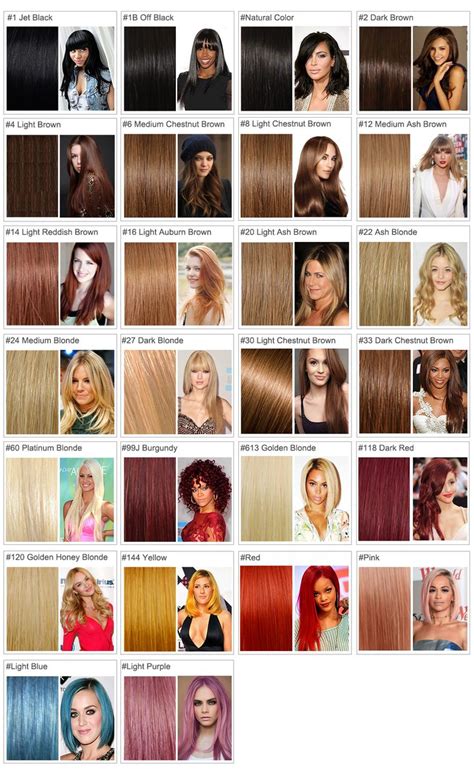Introduction

Human hair color, a captivating trait, has been a subject of fascination for centuries. Its diversity, influenced by genetics, ethnicity, and cultural norms, unveils a tapestry of fascinating hues and tones that define our individual identities.
Genetics of Hair Color
Hair color is primarily determined by the presence of two pigments: eumelanin and pheomelanin. Eumelanin contributes to brown and black shades, while pheomelanin imparts red or yellow tones. The interaction of these pigments and their distribution along the hair shaft results in the wide array of colors we observe.
Shades of Human Hair
The Fitzpatrick Scale, developed by dermatologist Thomas B. Fitzpatrick, categorizes human skin tones into six types. Correspondingly, hair color can be classified into the following categories:
| Fitzpatrick Skin Type | Hair Color Range |
|---|---|
| Type I | Red, blonde |
| Type II | Blonde, brown |
| Type III | Brown, black |
| Type IV | Brown, black |
| Type V | Dark brown, black |
| Type VI | Black |
Natural Hair Colors
Based on their natural occurrence, human hair colors fall into three primary categories:
- Blonde: Ranges from pale yellow to golden, often associated with Western European ancestry.
- Brunette: Embraces a spectrum from light to dark brown, prevalent in both European and Asian populations.
- Black: The darkest natural hair color, characterized by a high concentration of eumelanin, typically found in individuals of African and East Asian descent.
Red Hair: A Genetic Enigma
Red hair, the rarest natural hair color, affects approximately 1-2% of the global population. It is primarily caused by a mutation in the MC1R gene, which reduces the production of eumelanin, allowing pheomelanin to dominate.
Styling Trends: Embracing Hair Color
Over the centuries, hair color has served as a powerful tool for self-expression and social identification. From the henna-dyed locks of ancient Egyptians to the vibrant hues of modern hair dyes, human ingenuity has transformed hair into a canvas for artistic creativity.
- Balayage: A freehand hair coloring technique that creates natural-looking highlights.
- Foilyage: Combines balayage and foil highlights for a more intense effect.
- Ombré: A gradual transition between two or more hair colors, blending from dark roots to lighter tips.
Common Mistakes to Avoid
Coloring hair can be a transformative experience, but it also requires careful consideration to avoid potential pitfalls.
- Over-Processing: Excessive chemical treatments can damage hair, leading to breakage and dryness.
- Wrong Shade: Choosing a hair color that clashes with skin tone can result in an unflattering appearance.
- Uneven Application: Improper technique can lead to uneven hair color distribution.
How to Color Your Hair at Home
For those seeking a cost-effective and convenient hair coloring experience, home treatments offer a viable option.
- Choose the Right Dye: Select a product that matches your desired color and hair type.
- Read the Instructions Carefully: Follow the manufacturer’s instructions precisely to avoid accidents.
- Strand Test: Apply the dye to a small section of hair first to ensure compatibility and avoid allergic reactions.
- Divide Hair: Section your hair into quadrants for easier application.
- Apply the Dye: Start at the roots and work your way to the ends, saturating each strand.
- Process: Leave the dye on for the recommended time, checking regularly for desired results.
- Rinse Thoroughly: Wash and condition hair after processing to remove any residual dye.
Conclusion
Human hair color, a complex and mesmerizing trait, offers a glimpse into the depths of human genetics and cultural diversity. From its natural hues to the ever-evolving styling trends, hair color remains an integral part of our personal expression and a testament to the ingenuity of human creativity. Embracing the beauty and versatility of hair color empowers us to enhance our appearance and celebrate our individuality.
